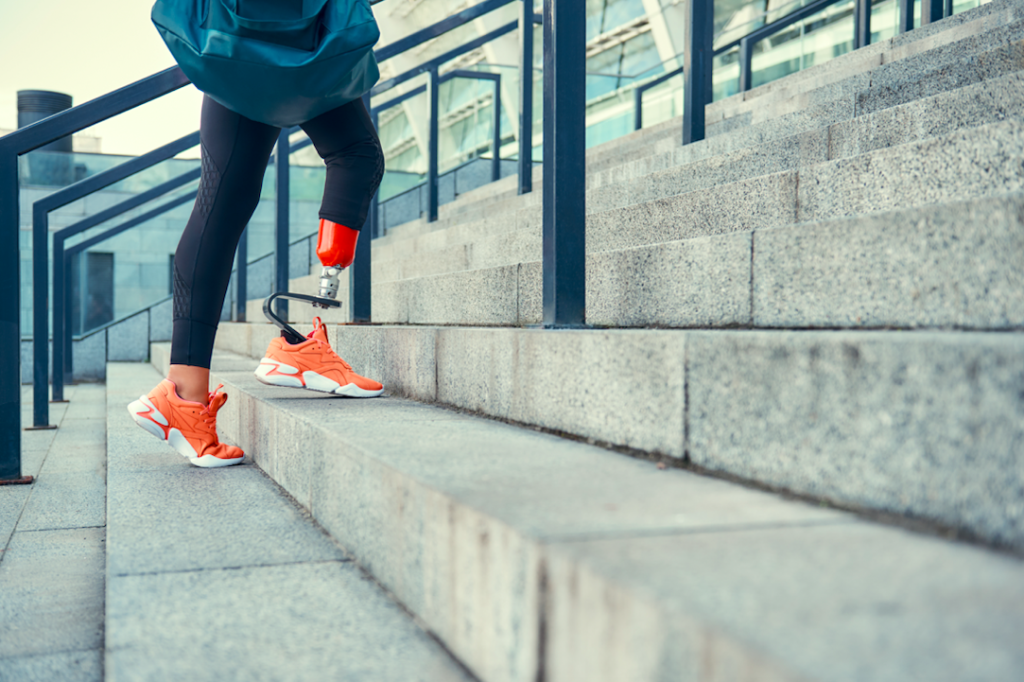Sunday Times Healthy Times
Freedom To Move
Prosthetics manufacturers are always looking for ways to improve communication between the body and external prostheses to enable amputees to move as naturally as possible.
“Sensors on muscles read signals and give input to the prosthesis to tell it to move in some preprogrammed way,” says Jan Kristensen, academy director of Össur, which develops and manufactures noninvasive orthopaedic equipment. “We always look for ways to give amputees more ‘ranges of freedom’ to allow them to perform more movements. Hand prostheses, for example, now have six motors, one in each finger and two in the thumb, giving users more ranges of freedom.”
Pattern Recognition
Pattern recognition, the holy grail of prosthetics, occurs when the prosthesis learns to interpret individual muscle movement patterns and assigns specific movements to that pattern. “Pattern recognition involves using more electrodes (or sensors), for example, in the arm, to pick up more signals and signals of different strengths,” says Jan Kristensen.
“Through software, we can allocate a certain pattern of muscle signals to the movement the amputee is trying to make with their finger, wrist or elbow. The prosthetist asks their patient to give signals for each type of movement. The software connects to the prosthesis via Bluetooth and in this way, they allocate signals to movements. The user must then replicate these muscle patterns within certain parameters.”
Prosthetic knees learn gait patterns and adapt to them, constantly changing speed to match the amputee’s walking speed. “Prosthetic knees have both load and gyro sensors that can adjust a thousand times each second,” says Kristensen. “Össur’s bionic knees use pattern recognition via artificial intelligence to recognise how each individual’s body moves. The knee needs to recognise when the walker changes pace or starts walking up or down stairs – walking up stairs demands a different movement to walking straight or down stairs, so the prosthesis needs to know when to extend the knee because we are walking straight, and when not to extend fully because we are walking up stairs. Algorithms in the knee work with pattern recognition, sending an order back to the harmonic drive in the knee.”
Picking up muscle patterns and acting accordingly is far more complex with arm prostheses than for lower limbs. “Our hands perform so many more tasks than our legs; we use a wide range of grips, so the permutations are vast,” says Kristensen. “On top of this, arm prostheses are much smaller than leg prostheses, so we have less space to work with.”
What amputees NEED TO KNOW
Amputations, whether elective (planned, for example, due to vascular insufficiencies caused by diabetes) or as a result of an accident, are always traumatic for the individual. Here’s how to prepare.
“Before an elective amputation, the amputee should meet the prosthetic rehabilitation team to plan a roadmap of the process,” says Jayson Chin, orthotist/prosthetist at Chin and Partners. “This reassures them that they will be able to return to their life, but with certain limitations. It helps to go into surgery knowing the plan. With emergency amputations, the amputee usually receives this information after surgery.”
Having a professional support team is critical to the process. “Our teams consist of a prosthetist, a physiotherapist, an occupational therapist, a psychologist or counsellor and a doctor, with a wound care nurse and a nutritionist called in when necessary,” says Chin. “The psychologist plays an important role in debriefing the process with the patient. Losing a limb triggers a grieving process, and the psychologist works with the amputee through denial, anger, helplessness, and towards acceptance. They also work with the family, who often find it difficult to adjust.”
After surgery, the amputee undergoes stump shaping. “It takes about two weeks for the surgical site to heal, after which we begin shaping the stump into a conical shape to fit into the hard socket of the prosthesis,” says Chin. “At this time, the physiotherapist starts bed exercises to strengthen muscles and instructs the patient on stump positioning to prevent a flexion contraction.”
Prehabilitation and stump shaping takes about six weeks. During this time, the occupational therapist liaises with employers and family and helps to modify the amputee’s work and home environment.
Once the prosthesis is ready, the prosthetist and physiotherapist teach the amputee how to function with the new limb. “This is an ongoing process of adjustment as the stump settles down,” says Chin. “The physiotherapist works with the amputee on balance, walking efficiency, and general body awareness andability. Together they explore how the amputee can return to sport or exercise and in what form.”
The process for upper limb amputees is similar, although it includes dominance retraining in amputees who have lost their dominant hand. “They learn to write, fasten their pants, do up buttons, fasten shoelaces – all things we take for granted. They are also shown various assistive devices that enable independence, for example, plates with spikes to hold food steady so that the amputee can use their good hand for slicing.”






 Sign-up and receive the Business Media MAGS newsletter OR SA Mining newsletter straight to your inbox.
Sign-up and receive the Business Media MAGS newsletter OR SA Mining newsletter straight to your inbox.